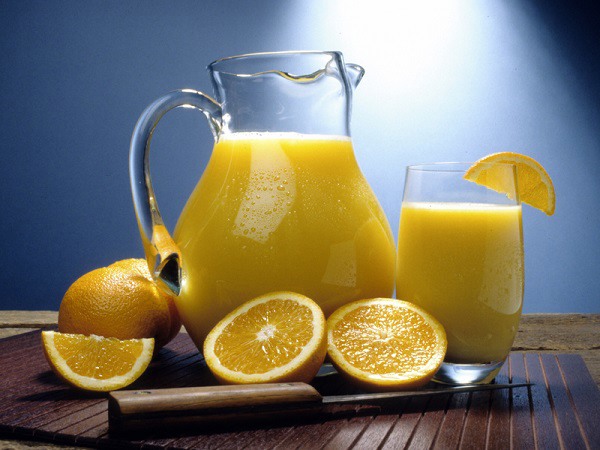Neil Murray of IHS Markit, the market analytics provider, yesterday told delegates at the inaugural Global Citrus Congress: “Global orange juice production is not looking particularly good for the current season, at about 1.6 million tonnes, down from 1.7 million, which was in turn down from over 2 million tonnes. 2017/18 was not a good year either but this is a fairly low level of orange juice production.”
Global orange juice supply for 2020/21 is severely constrained while demand is roughly the same as the previous year, resulting in an imbalance of roughly 100,000 tonnes.
 Photo 12337175 © Andrew Unangst | Dreamstime.com
Photo 12337175 © Andrew Unangst | Dreamstime.com
The demand for fresh oranges is expected to remain strong, resulting in potentially less fruit going for processing which could bolster prices, which wouldn’t be a bad thing, he notes.
“The good news is that juice is back on the menu again. People are not thinking of sugar content or tooth decay or anything like that, they’re buying orange juice because it’s good for them and it’s got a lot of Vitamin C in it. This is a welcome turnaround for the industry, even if the rate of increase in the US is slowing down.”
Orange juice price will definitely increase
There are high inventories of Frozen Concentrate Orange Juice (FCOJ) in Brazil and juice consumption is probably down due to severe declines in food service sector.
“We don’t think the loss in the catering sector has been compensated by the increase in retail sales. We think the loss of juice volume in catering channels (HoReCa) has been substantial, maybe less so in premium hotels."
With the increases in the retail demand and low production, he said that they had received as yet unconfirmed reports that Brazil was cutting its price of FCOJ until the end of the year. Such a move would stimulate demand and would be giving Spain serious competition in the NFC sector, he maintained.
Shelf stable juice sales will also increase. “The second wave of Covid-19 is with us and we expect consumers to stock up.”
The forecast for the 2019/20 season of global orange production (fresh market sales as well as processing) is a fairly low figure, he says, at almost 47.5 million tonnes, down from 2018/19 (53.2 million tonnes). European major production of orange juice stands 5.8 million tonnes.
Egypt’s orange production is now equivalent to that of Spain (and their essential oils industry is looking interesting, he noted). Egypt’s main effect will be higher demand for their fresh oranges to make up for the lower production of fresh oranges in Europe.
The Brazilian not from concentrate (NFC) sector is of great importance for Europe: “Not From Concentrate is where the money is and where the big volumes are. So they are very very anxious to keep the trade. You must bear this in mind in the context of Spanish orange juice production."
Increased Chinese consumption of superpremium, NFC juice
About fifteen years ago China was forecast to become an enormous producer and consumer of orange juice, but that has never realised because most of their citrus plantings have been mandarins and clementines and moreover, orange juice isn’t domestically as popular as, say, snow pear juice.
There’s extremely small growth in orange juice production and consumption in China.
Something that is, however, worth watching, he pointed out, was high-quality fresh oranges squeezed at independent café chains or international coffee shops in major Chinese cities, probably both local and imported oranges.
Lemon bumper crop from Spain, low Argentine supplyThere have been very weak prices for lemon juice concentrate since Argentina's overproduction.
There is stronger demand for fresh lemons.
Spain expects a bumper lemon crop for 2020/21, 1.29 million tonnes, mostly grown for the fresh market.
"In the Spanish lemon juice industry the move has been towards not from concentrate (NFC) lemon juice with a dramatic increase, well over 100,000 tonnes. This is the way the Spanish industry is going and NFC of course has a better margin.”
A large Spanish crop will make Argentine imports into Spain less competitive.
Argentina, on the other hand, expects a very small crop. The lemon juice industry has experienced steady growth (except for frost damage in 2014) but he posited that the problem was lemon juice concentrate overproduction. The country only produces concentrate, not NFC, unlike Spain. Murray considers it would be in Argentina’s interest to start branching out into NFC production.
The greater part of the Argentine crop goes for juice production so the effect of price has been quite dramatic: lemon juice concentrate prices have fallen off a cliff, he said, with the result that more fresh sales and a cut in lemon juice production could be expected next season. The Argentine inflation rate is not helping and historically low prices simply have to rise.
Citrus remains a favourite flavour
The good news is that the favour of citrus remains desirable in new product development. He quoted Kerry Ingredients: “Since 2017, 47% of flavoured waters have contained citrus profiles. In the same year, citrus was included in 38% of sports and energy drinks, 34% of carbonated soft drinks, 30% of flavoured alcoholic beverages, 29% of RTD iced teas and 26% of juices.”
Lemon and orange oil prices are expected to rise slightly, simply because they’re by-products of the concentrate process and there’s less concentrate going to be made.
